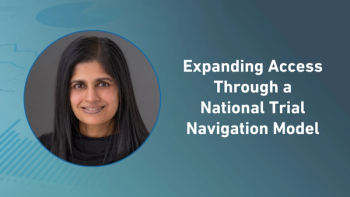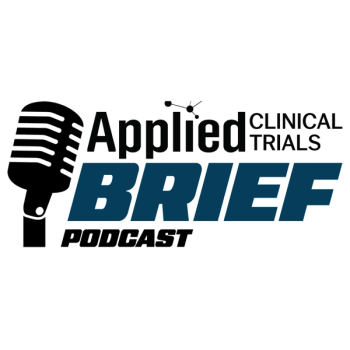Key Takeaways
- Sustained Benefit Over Three Years: Kisunla continued to slow cognitive and functional decline in patients with early Alzheimer disease (AD), with benefits growing over time.
- Early Treatment Advantage: Starting Kisunla earlier reduced the risk of disease progression by 27% compared to delayed treatment.
- Amyloid Clearance and Safety: Over 75% of patients reached amyloid clearance, with no new safety signals observed during the long-term extension.
Results from the long-term extension (LTE) of the Phase III TRAILBLAZER-ALZ 2 trial (NCT04437511) showed that Eli Lilly’s Kisunla (donanemab-azbt) continued to slow cognitive and functional decline in patients with early symptomatic Alzheimer disease (AD) over a three-year period. According to the company, results demonstrated that patients who began treatment earlier experienced greater clinical benefit.1
What was Kisunla’s Long-Term Efficacy Results in Treating Early AD?
"The TRAILBLAZER-ALZ 2 long-term extension reaffirms that Kisunla delivered sustained clinical benefit that continued to increase over three years and a consistent safety profile," said Mark Mintun, MD, group VP, neuroscience research & development, Eli Lilly and Company, in a press release. "Participants continued to show meaningful outcomes, reinforcing the long-term value of early intervention."
Trial Design and Key Findings From the TRAILBLAZER-ALZ 2 LTE
- The double-blind TRAILBLAZER-ALZ 2 LTE trial evaluated the safety and efficacy of Kisunla in 1,736 patients with early symptomatic AD.
- During the LTE, patients who had initially received Kisunla either continued treatment or were switched to placebo, while those originally on placebo began blinded treatment with Kisunla.
- A matched group of untreated individuals from the Alzheimer’s Disease Neuroimaging Initiative (ADNI) database was used as an external comparison to evaluate the treatment outcomes.1,2
- Results showed that over a three-year period, patients treated with Kisunla demonstrated increasing benefit compared to a matched untreated group from ADNI, with cognitive decline reduced by 0.6 points at 18 months and 1.2 points at 36 months on the Clinical Dementia Rating Sum of Boxes
- Early treatment initiation further lowered the risk of progressing to the next disease stage by 27% based on the Clinical Dementia Rating-Global Score compared to patients who started treatment later.
- Over 75% of patients achieved amyloid clearance within 76 weeks of starting Kisunla.
- Among the patients who completed treatment, amyloid plaque reaccumulation remained slow over 2.5 years, at approximately 2.4 centiloids per year, consistent with previous data.
- No new safety signals were identified during the LTE.1
Recent Regulatory Activity
The LTE results come shortly after the FDA approved a label update for Kisunla. Earlier this month, the agency authorized a new titration dosing schedule aimed at reducing the incidence of amyloid-related imaging abnormalities with edema/effusion in patients with early symptomatic AD, including those with mild cognitive impairment or mild dementia and confirmed amyloid pathology. This decision was based on data from the TRAILBLAZER-ALZ 2 trial.3
Kisunla was first approved by the FDA in July 2024 as the first amyloid plaque-targeting therapy that allows for stopping treatment upon plaque removal in patients with early symptomatic AD.4
AD Landscape in the United States
According to a 2024 study published in the National Center for Biotechnology Information, an estimated 6.9 million people in the United States 65 years of age and older are currently living with AD. The number is expected to grow to approximately 13.8 million by 2060, barring the development of medical breakthroughs. Currently, it is the fifth leading cause of death among Americans aged 65 years and older.5
"Kisunla demonstrated very meaningful results for people with early symptomatic Alzheimer's disease, who urgently need effective treatment options,: said Anne White, EVP, president, Lilly Neuroscience, Eli Lilly and Company, in a 2024 press release. “We know these medicines have the greatest potential benefit when people are treated earlier in their disease, and we are working hard in partnership with others to improve detection and diagnosis. Our deepest thanks to the patients and their loved ones for participating in our clinical programs and to Lilly scientists and collaborators persevering over decades of research. Each year, more and more people are at risk for this disease, and we are determined to make life better for them."4
References
- Lilly's Kisunla (donanemab-azbt) showed growing benefit over three years in early symptomatic Alzheimer's disease. Lilly. July 30, 2025. Accessed July 31, 2025. https://investor.lilly.com/news-releases/news-release-details/lillys-kisunla-donanemab-azbt-showed-growing-benefit-over-three
- A Study of Donanemab (LY3002813) in Participants With Early Alzheimer's Disease (TRAILBLAZER-ALZ 2). Clinicaltrials.gov. Accessed July 31, 2025. https://clinicaltrials.gov/study/NCT04437511?term=TRAILBLAZER-ALZ%202&rank=4
- FDA Approves Label Update for Eli Lilly’s Kisunla to Reduce ARIA-E Risk in Early Alzheimer Disease Treatment. PharmExec. July 10, 2025. Accessed July 31, 2025. https://www.pharmexec.com/view/fda-approves-label-update-eli-lilly-kisunla-reduce-aria-e-risk-early-alzheimer-disease-treatment
- FDA Approves Lilly’s Kisunla for the Treatment of Early Symptomatic Alzheimer’s Disease. PharmExec. July 2, 2024. Accessed July 31, 2025. https://www.pharmexec.com/view/fda-approves-lilly-kisunla-treatment-early-symptomatic-alzheimer-disease
- 2024 Alzheimer's disease facts and figures. NIH. Accessed July 31, 2025. https://pubmed.ncbi.nlm.nih.gov/38689398/





